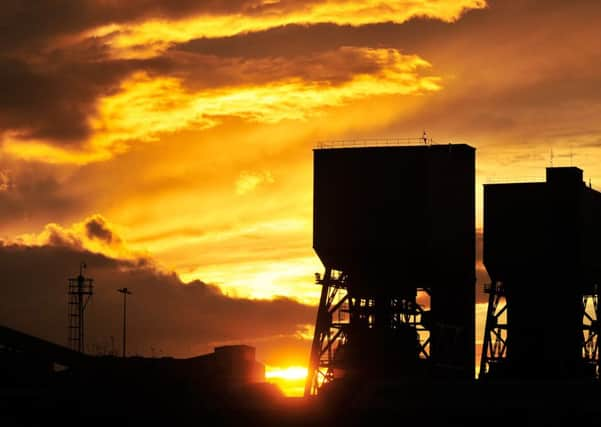YP Comment: Sun sets on Kellingley and a once great industry


IT is not just half a century of history which will draw to a poignant close this afternoon when the last miners, their faces etched with emotion following years of toil underground and their uniforms blackened by coal-dust, dim their headlamps and emerge from Kellingley Colliery into the fading daylight following the final shift at this proud plant.
The arrival of these men will also signify the end of centuries of deep coal production in Yorkshire and the UK. There will be no turning back, despite the best intentions of those who believe, with some justification, that Ministers have allowed the last embers of this industry to burn out prematurely when there are growing and genuine concerns about this country’s energy security.
Advertisement
Hide AdAdvertisement
Hide AdFor too long, “coal” was allowed to become a dirty word – literally and metaphorically – because of industrial unrest, floundering finances and greater awareness about the environment, and the Government clearly does not have the energy to put this region at the forefront of pioneering clean-coal technology which might have provided pits, like Kellingley, with a stay of execution.
Yet this indifference must not detract from the symbolism of today. Until now, coal has been the heartbeat of Yorkshire. It powered the Industrial Revolution and built the British Empire. It became emblematic with this region’s hard-earned reputation for blood, sweat and tears – even hard-nosed stubbornness – and this county, indeed this country, must never forget all those who lost their lives in those pit tragedies which became an occupational hazard.
For many, they had no option – their only career choices were the local mine or the dole office. Only a select, and lucky, few emerged from the mines to answer their country’s call – whether it be in sport or politics. It’s because of this that the collieries, and associated facilities like social clubs, became steeped in the fabric of so many communities in Yorkshire’s industrial heartlands. They were the life and soul of these towns – it is why the 1984-85 strike caused so much heartache to all those families caught up on the front line of the bitter dispute – and this remains the case today long after the closure of the mines in question.
For, while the collieries are now silent and have, in some instances, been transformed into industrial parks at the forefront of a digital age, it is this coal mining heritage, and the collective endeavour of all those who supported the pit workers through thick and thin, which still binds generations of families together like no other.
Advertisement
Hide AdAdvertisement
Hide AdMoving forward, Yorkshire must – and will – stand by its former coal communities and help them to unearth a new seam of investment and potential. The tragedy is that it has taken three decades for national politicians to wake up to the fact that the towns and villages which provided the mining manpower for pits like Kellingley will need practical help for many years to come if they’re to make a successful transition from heavy manufacturing to hi-tech industry without families being left on the spoil heap. There’s much to do, even if coal is no more.
Pollution poser: Leeds pay the price over congestion
THE proposal to impose charges on the drivers of high-polluting vehicles if they wish to travel through Leeds city centre will inevitably polarise opinion. Many environmentally-conscious people will say this is a necessary consequence of the Paris climate change talks, which ended last weekend, while sceptics will claim that the Government’s proposal is the proverbial “thin end of the wedge” and the precursor to the London congestion charge being rolled out across the UK.
Much will depend on the scheme’s implementation – and whether it can be effectively enforced without becoming a drain on the public purse. That remains to be seen, given that only a relatively small number of vehicles will come under the auspices of this clampdown. But this policy alone will not reduce levels of congestion, the big policy challenge in this resurgent West Yorkshire city. The continuing absence of any kind of rapid transit scheme, despite more than a decade of procrastination over the Supertram and Trolleybus schemes, continues to besmirch the reputation of Leeds, and any profit generated by this new scheme must be re-invested in the city’s creaking public transport network.
The Government and Leeds City Council also need to be aware that far more pollution was probably caused by Wednesday’s gridlock which was the consequence of two accidents on the M62. Both need to come up with better ways of keeping motorists on the move – there is no public transport alternative for many families – and even reprogramme traffic lights to prevent longer tailbacks and even more harmful pollutants being released into the city’s atmosphere.